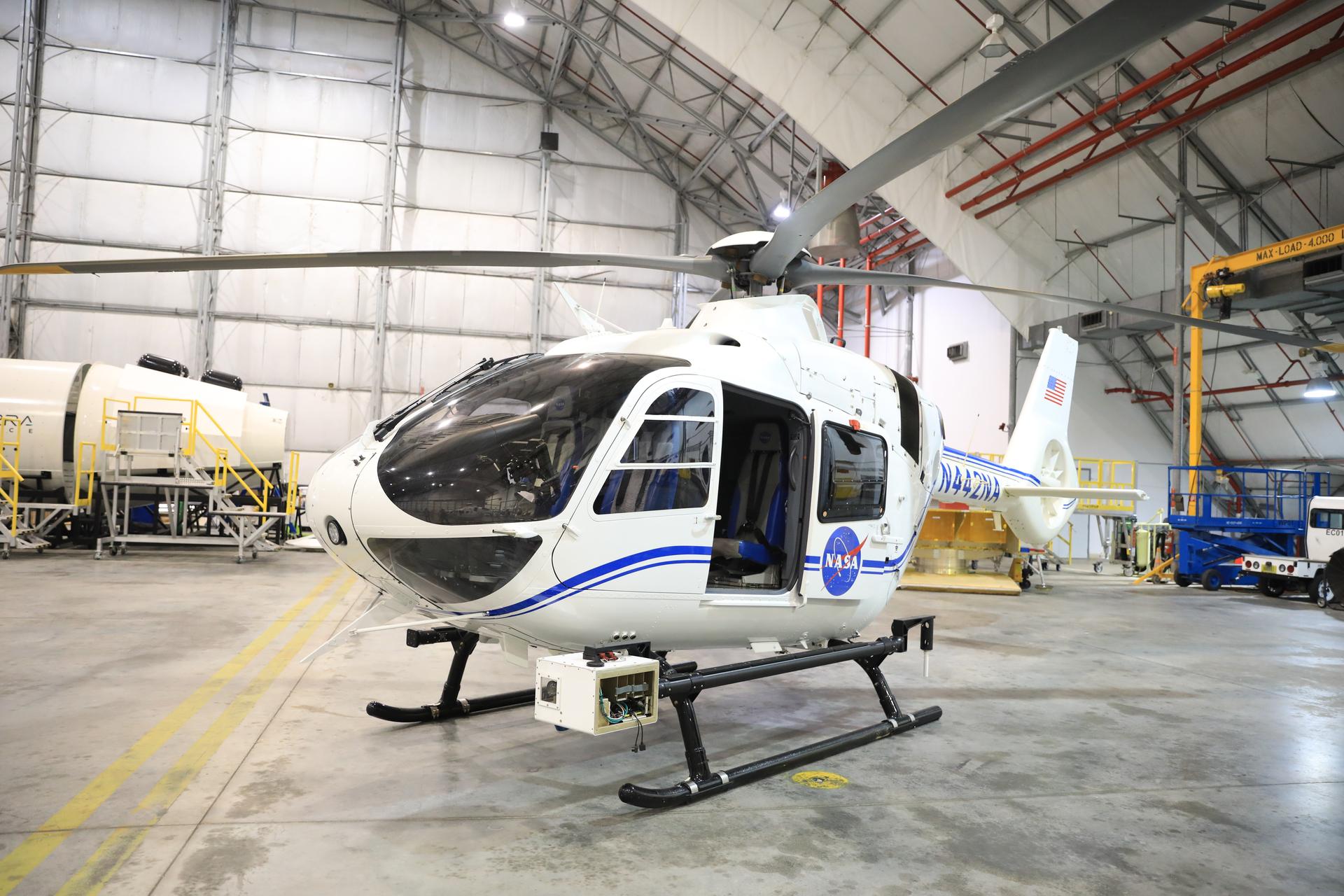NASA Develops Pod to Help Autonomous Aircraft Operators

The NASA Airborne Instrumentation for Real-world Video of Urban Environments (AIRVUE) sensor pod is attached to the base of a NASA helicopter at NASA’s Kennedy Space Center in Cape Canaveral, Florida in April 2024 before a flight to test the pod’s cameras and sensors. The AIRVUE pod will be used to collect data for autonomous aircraft like air taxis, drones, or other Advanced Air Mobility aircraft.NASA/Isaac Watson
For self-flying aircraft to take to the skies, they need to learn about their environments to avoid hazards. NASA aeronautics researchers recently developed a camera pod with sensors to help with this challenge by advancing computer vision for autonomous aviation.
This pod is called the Airborne Instrumentation for Real-world Video of Urban Environments (AIRVUE). It was developed and built at NASA’s Armstrong Flight Research Center in Edwards, California. Researchers recently flew it on a piloted helicopter at NASA’s Kennedy Space Center in Cape Canaveral, Florida for initial testing.
The team hopes to use the pod to collect large, diverse, and accessible visual datasets of weather and other obstacles. They will then use that information to create a data cloud for manufacturers of self-flying air taxis or drones, or other similar aircraft, to access. Developers can use this data to evaluate how well their aircraft can “see” the complex world around them.
NASA researchers Elizabeth Nail (foreground) and A.J. Jaffe (background) prepare the NASA Airborne Instrumentation for Real-world Video of Urban Environments (AIRVUE) sensor pod for testing at NASA’s Kennedy Space Center in Cape Canaveral, Florida, in April 2024.NASA/Isaac Watson
“Data is the fuel for machine learning,” said Nelson Brown, lead NASA researcher for the AIRVUE project. “We hope to inspire innovation by providing the computer vision community with realistic flight scenarios. Accessible datasets have been essential to advances in driver aids and self-driving cars, but so far, we haven’t seen open datasets like this in aviation.”
The computer algorithms that will enable the aircraft to sense the environment must be reliable and proven to work in many flight circumstances. NASA data promises that fidelity, making this an important resource for industry. When a company conducts data collection on their own, it’s unlikely they share it with other manufacturers. NASA’s role facilitates this accessible dataset for all companies in the Advanced Air Mobility industry, ensuring the United States stays at the forefront of innovation.
Once the design is refined, through evaluation and additional testing, the team hopes to make more pods that ride along on various types of aircraft to collect more visuals and grow the digital repository of data.
Share
Details
Last Updated
Aug 26, 2024
EditorDede DiniusContactTeresa [email protected] Flight Research Center
Related TermsArmstrong Flight Research CenterAdvanced Air MobilityAeronauticsAmes Research CenterDrones & YouGlenn Research CenterLangley Research CenterTransformational Tools Technologies
Explore More
4 min read
NASA Seeks Input for Astrobee Free-flying Space Robots
Article
15 hours ago
2 min read
NASA Composite Manufacturing Initiative Gains Two New Members
Article
4 days ago
3 min read
Beyond the Textbook: DC-8 Aircraft Inspires Students in Retirement
Article
5 days ago
Keep Exploring
Discover More Topics From NASA
Armstrong Flight Research Center
Armstrong Programs & Projects
Armstrong Technologies
Armstrong Flight Research Center History
Welcome to Billionaire Club Co LLC, your gateway to a brand-new social media experience! Sign up today and dive into over 10,000 fresh daily articles and videos curated just for your enjoyment. Enjoy the ad free experience, unlimited content interactions, and get that coveted blue check verification—all for just $1 a month!
Account Frozen
Your account is frozen. You can still view content but cannot interact with it.
Please go to your settings to update your account status.
Open Profile Settings